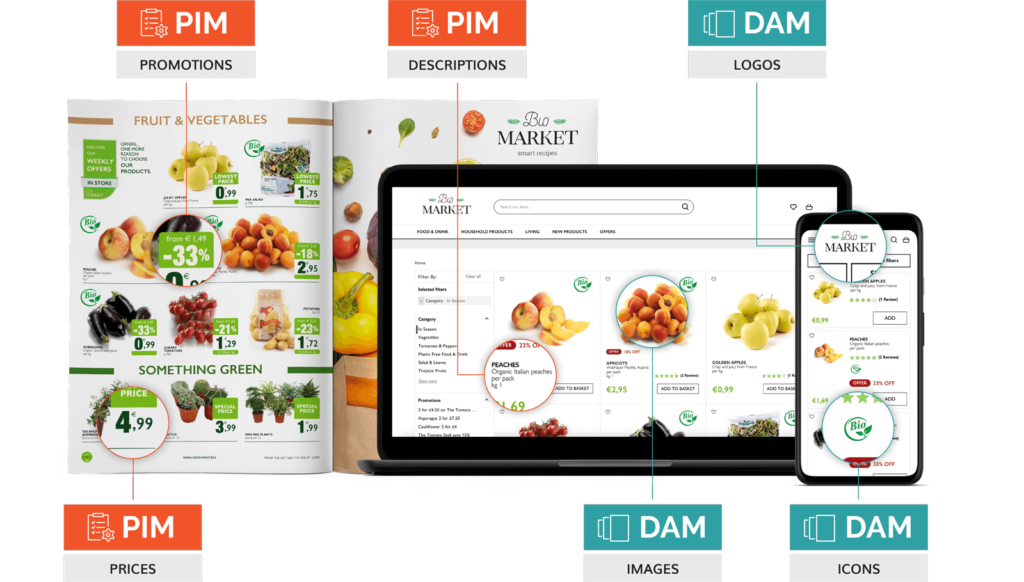They may be evolving away from their strictly print focussed legacy, but the intricacies surrounding the creation of a product catalogue remain. Fortunately, there now also exists software designed specifically towards making the smorgasbord of catalogue production altogether less precarious.
Whether you’re the kind of consumer that studies a monthly catalogue with calculator and magic marker in hand, or the person who in mid-July gets distracted from window-cleaning chores by pictures and best prices of Easter eggs, the thinking behind the creation of a store catalogue has changed little since the first leaflet listing the published books of The Aldine Press hit the streets – and likely some waters, too – of Venice in 1498.
Indeed, since the production of this first form of catalogue, manufacturers and retailers alike remain drawn to the appeal of showcasing their respective wares via brightly coloured, categorised and often themed brochures highlighting not only the virtues of each featured item, but also its limited-time-offer best purchase price.
The advent and subsequent rapid growth of online shopping platforms may have made the catalogue browsing experience both that much more accessible and convenient, yet the behind-the-scenes processes involved in planning, compiling, designing, fact checking and the eventual publication of a broad selection of promotional items remains largely unchanged, be it for digital or print consumption.
Automating catalogue production means:
- Faster and more efficient processes, saving time and money
- Automatic information updates that remove the risk of errors and discrepancies
- Lower resource requirements, so you can do more with less
- Streamlined systems, reduction in complexity and associated costs
Taking the 176-year-old annual Tiffany’s Blue Book of featured jewellery as an example, strategy and planning aside, the design process of a catalogue can prove daunting, especially when so many images and products may appear similar to an untrained eye. Here many in-house, as well as outsourced agency studios rely on carefully integrated Digital Assets Management (DAM) software that stores any number of images, logos, themed branding and product descriptions within an easily searchable library. These intricate systems are designed to remove most of the leg- and guesswork associated with allocating the correct product picture, together with its respective information within its corresponding slot within the layout of the catalogue page.

After embracing content orchestration and digital asset management, one national supermarket chain - with 71 stores and a large e-commerce platform - achieved a staggering 97% reduction in time locating product images – from 68 hours to 2 hours per campaign - as well as a 20% reduction in costs arising from images being misplaced and recommissioned.
Incorporated within a modern workflow management system, the design and layout of a catalogue can continue with any number of department managers or product specialists afforded an opportunity to oversee, track and recommend changes throughout the process, rather than once the artwork has been completed – and with a print deadline looming.
Another modern piece of software designed to make catalogue production, in particular, a much more fluid process is a Product Information Management (PIM) system. When integrated within a DAM, the appeal of this technology is that any necessary change made regarding the information associated with product scheduled to appear within a catalogue, digital or print, is made once before automatically updated to align with wherever else this product appears. From pricing and stock availability, to customer reviews and ratings, PIM software is designed to eliminated any “broken telephone” mistakes and inconsistencies that may creep into the production process, especially as this now incorporates any number of modern platform options.
When PIM and DAM are integrated with your catalogue production processes, magical things happen.
- Product images can be automatically pulled into your catalogue design alongside text and data
- Product images can automatically update in your design (and anywhere else they’re used) if they change in your DAM
- Designers save significant time compared to manually searching for, retrieving, and importing hundreds of images from external sources or internal file servers
Printed or published online, the appeal of a well-presented, value-filled browsing experience remains. Thankfully, via modern integrated software systems including DAM and PIM solutions, the process of planning and compiling these ever-important pages is more efficient than ever before. Indeed, combined with a well-considered workflow system, much of the guesswork and potential inconsistencies associated with catalogue publication across various platforms and division can be eliminated.
The software discussed above, has applications beyond just catalogue automation. Integrating software like a PIM and a DAM, can also form the foundation for more effective processes for digital channels as well.
If you want to iron out inefficiencies in your production process, there are lots of content automation solutions available. To find out which is right for you contact us.





